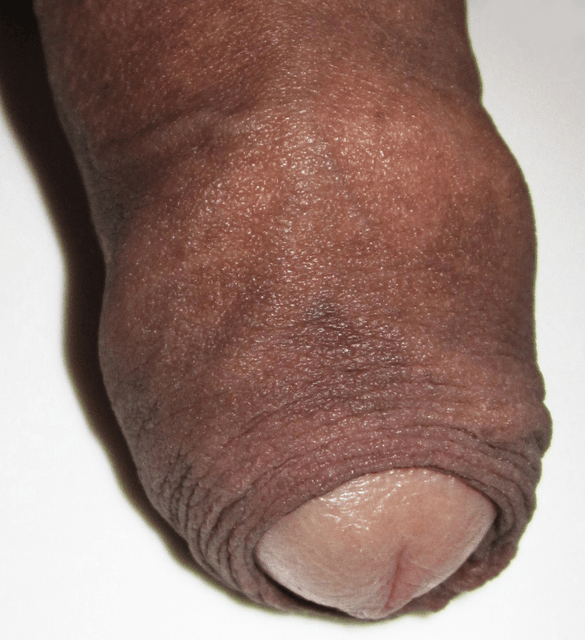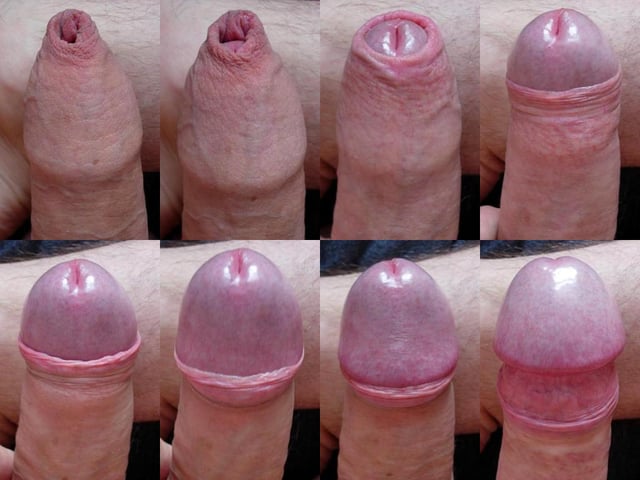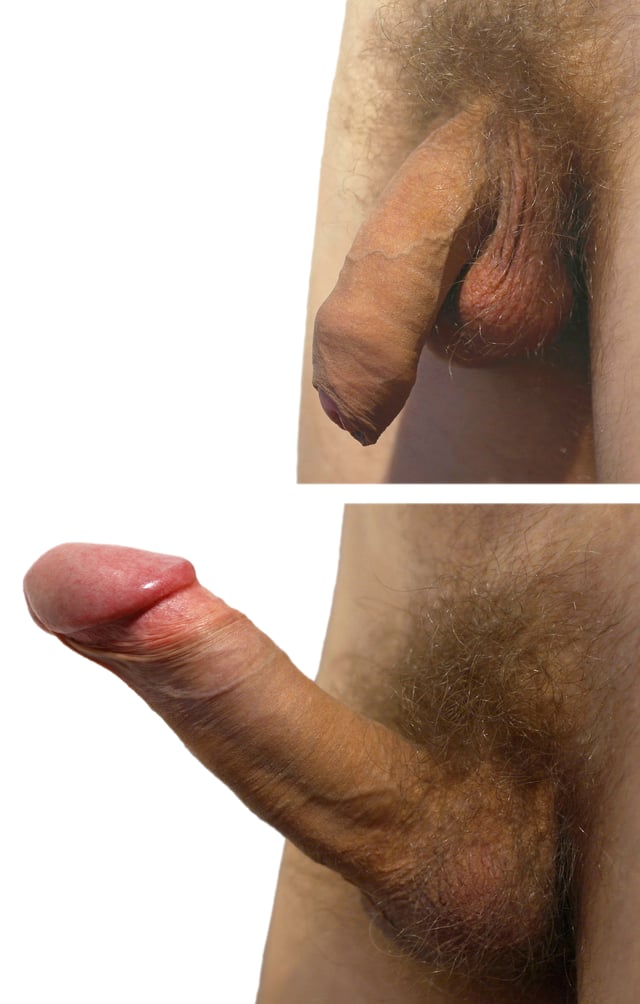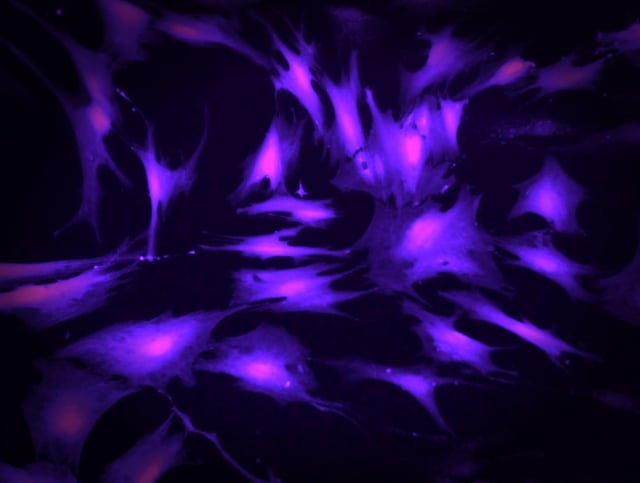Foreskin

Foreskin

The foreskin is the double-layered fold of smooth muscle tissue, blood vessels, neurons, skin, and mucous membrane part of the penis that covers and protects the glans penis and the urinary meatus. It is also described as the prepuce, a technically broader term that also includes the clitoral hood in women, to which the foreskin is embryonically homologous. The highly innervated mucocutaneous zone of the penis occurs near the tip of the foreskin. The foreskin is mobile, fairly stretchable, and acts as a natural lubricant.
The foreskin of adults is typically retractable over the glans. Coverage of the glans in a flaccid and erect state varies depending on foreskin length. The foreskin is attached to the glans at birth and is generally not retractable in infancy. Inability to retract the foreskin in childhood should not be considered a problem unless there are other symptoms.[1]
The World Health Organization debates the precise functions of the foreskin, which may include "keeping the glans moist, protecting the developing penis in utero, or enhancing sexual pleasure due to the presence of nerve receptors".[2]
The foreskin may become subject to a number of pathological conditions.[3] Most conditions are rare, and easily treated. In some cases, particularly with chronic conditions, treatment may include circumcision, a procedure where the foreskin is partially or completely removed.
Description

Diagram of a portion of the male anatomy
The outside of the foreskin is a continuation of the skin on the shaft of the penis, but the inner foreskin is a mucous membrane like the inside of the eyelid or the mouth. The mucocutaneous zone occurs where the outer and inner foreskin meet. The ridged band of highly innervated tissue is located just inside the tip of the foreskin. Like the eyelid, the foreskin is free to move after it separates from the glans, which usually occurs before or during puberty. The foreskin is attached to the glans by a frenulum, a highly vascularized tissue of the penis.[2] The World Health Organization states that "[t]he frenulum forms the interface between the outer and inner foreskin layers, and when the penis is not erect, it tightens to narrow the foreskin opening.[2]
The human foreskin contains a sheath of muscle tissue just below the skin, formerly known as the peripenic muscle and now called the dartos fascia, most of which is contained in the foreskin. Elastic fibers are contained in the dartos fascia, which form a whorl at the tip of the foreskin. The whorl of fibers acts as a sphincter in infants, which opens to allow the passage of urine, but closes to protect the glans penis from foreign matter and contaminants. The dartos fascia is sensitive to temperature and expands and contracts with temperature changes. The dartos fascia is only loosely connected with the underlying tissue so it provides the skin mobility and elasticity of the penile skin.
According to the histological findings of the British Association of Urological Surgeons based on a research conducted on the autopsy of 22 foreskins, "the prepuce provides a large and important platform for several nerves and nerve endings",[4] and presents uniquely specialized sensory tissues such as the preputial mucosa and the ridged band.[4] The College of Physicians and Surgeons of British Columbia has written that the foreskin is "composed of an outer skin and an inner mucosa that is rich in specialized sensory nerve endings and erogenous tissue."[5]
Development

Once the foreskin has naturally separated from the glans, the foreskin's two layers of outer skin and inner mucosa can be retracted to reveal the glans, inner foreskin, and ridged band.
The foreskin is present in non-human primates, including the chimpanzee.[2]
Eight weeks after fertilization, the foreskin begins to grow over the head of the penis, covering it completely by 16 weeks. At this stage, the foreskin and glans share an epithelium (mucous layer) that fuses the two together. It remains this way until the foreskin separates from the glans.
In children, the foreskin usually covers the glans completely but in adults it may not. During erection, the degree of automatic foreskin retraction varies considerably; in some adults, the foreskin remains covering all or some of the glans until retracted manually or by sexual activity. This variation was regarded by Chengzu (2011) as an abnormal condition named 'prepuce redundant'. Frequent retraction and washing under the foreskin is suggested for all adults but particularly for those with a long, or 'redundant' foreskin.[7] When the foreskin is longer than the erect penis, it will not spontaneously retract upon erection.
It is shown that manual foreskin retraction during childhood or even adulthood serves as a stimulant to normal development and automatic retraction of the foreskin, which suggests that many conditions affecting the foreskin may be prevented or cured behaviorally. Some males, according to Xianze (2012), may be reluctant for their glans to be exposed because of discomfort when it chafes against clothing, although the discomfort on the glans was reported to diminish within one week of continuous exposure.[8] Guochang (2010) states that for those whose foreskins are too tight to retract or have some adhesions, forcible retraction should be avoided since it may cause injury.[9]
Functions

The foreskin typically covers the glans when the penis is not erect (top image), but generally retracts upon erection (bottom image). Coverage of the glans in a flaccid and erect state varies depending on foreskin length
The World Health Organization (2007) states that there is "debate about the role of the foreskin, with possible functions including keeping the glans moist, protecting the developing penis in utero, or enhancing sexual pleasure due to the presence of nerve receptors".[2] The foreskin helps to provide sufficient skin during an erection.[10]
The foreskin protects the glans.[5] The foreskin protects the glans of infants from ammonia and feces in diapers, which reduces the incidence of meatal stenosis, and continues to protect the glans from abrasions and trauma throughout life.[10] The fold of the prepuce maintains sub-preputial wetness, which mixes with exfoliated skin to form smegma.
The American Academy of Pediatricians' 2012 technical report on circumcision found that the foreskin tends to harbor micro-organisms that can lead to urinary tract infections in infants and tend to contribute to the transmission of sexually transmitted infections in adults.[11]
Sensitivity
The foreskin is specialized tissue that is packed with nerves and stretch receptors.[12] The foreskin contains Meissner's corpuscles, which are nerve endings involved in fine-touch sensitivity. They are most concentrated in the "ridged band", where the inner and outer foreskin layers meet, and least concentrated in the smooth inner layer of foreskin. Compared to other hairless skin areas on the body, the Meissner's index was highest in the finger tip (0.96) and lowest in the foreskin (0.28). The foreskin is the least sensitive hairless tissue of the body. A study also found that "the number of these nerve endings decreases significantly after the teenage to young adult years when sexual activity begins. This makes it very difficult to propose any sexual function for Meissner's corpuscles. A more feasible hypothesis is to regard them as a juvenile phenomenon, perhaps serving to protect the penis until the onset of puberty reveals its sexual function."[13] Charles Darwin speculated that the sensitivity of the foreskin to fine touch might have served as an "early warning system" in our naked ancestors while it protected the glans from the intrusion of biting insects and parasites.[14]
Moses and Bailey (1998), say that "it has not been demonstrated that [the foreskin] is associated with increased male sexual pleasure."[15] A 2015 study in sexual sensation concluded that the glans, not the foreskin, is involved in sexual sensation, particularly the corona and frenular (the area under the frenulum) areas.[13] Morris and Krieger state, "Thus, speculation and outdated opinion pieces claiming special properties of the foreskin, such as in penile function and masturbation, should be viewed with skepticism."[16] Contrary to popular belief and opinion, two studies conducted in 2013 that examined sexual penile sensitivity before and after circumcision both found higher penile sensitivity post circumcision. It was deduced that even a retracted foreskin would tend to reduce the stimulus to the corona and frenular areas, particularly on the outward stroke of intercourse. However, both studies concluded that there were no significant differences in sexual function between circumcised and uncircumcised men.[17][18] The 2015 study determined that "any sexual effect of circumcision must depend solely on the exposure of the glans and not on the absence of the prepuce."[13] The study concluded that male circumcision has no adverse effect on parameters relevant to sexual function, sensation, sensitivity, satisfaction, or pleasure.[13]
The World Health Organization (2007) states that "Although it has been argued that sexual function may diminish following circumcision due to the removal of the nerve endings in the foreskin and subsequent thickening of the epithelia of the glans, there is little evidence for this and studies are inconsistent."[2] There is controversy about whether the epithelium of the glans of an uncircumcised penis is keratinised; some authors claim that it is not,[19] while one study examined the glans of seven circumcised and six uncircumcised men and found the epithelia to be equally keratinised.[20]
The Royal Dutch Medical Association (2010) states that many sexologists view the foreskin as "a complex, erotogenic structure that plays an important role 'in the mechanical function of the penis during sexual acts, such as penetrative intercourse and masturbation'."[21] In 2010 the same association called non-therapeutic male circumcision a harmful and painful ritual that violates children's rights.[22]
Evolution
In modern times, there is controversy regarding whether the foreskin is a vital or vestigial structure.[27] In 1949, British physician Douglas Gairdner noted that the foreskin plays an important protective role in newborns. He wrote, "It is often stated that the prepuce is a vestigial structure devoid of function... However, it seems to be no accident that during the years when the child is incontinent the glans is completely clothed by the prepuce, for, deprived of this protection, the glans becomes susceptible to injury from contact with sodden clothes or napkin."[27] During the physical act of sex, the foreskin reduces friction, which can reduce the need for additional sources of lubrication.[27] "Some medical researchers, however, claim circumcised men enjoy sex just fine and that, in view of recent research on HIV transmission, the foreskin causes more trouble than it’s worth."[27] The area of the outer foreskin measures between 7–100 cm2,[28] and the inner foreskin measures between 18–68 cm2,[29] which is a wide range. Regarding vestigial structures, Charles Darwin wrote, "An organ, when rendered useless, may well be variable, for its variations cannot be checked by natural selection."[14] In the March 2017 publication of the Global Health Journal: Science and Practice, Morris and Krieger wrote, "The variability in foreskin size is consistent with the foreskin being a vestigial structure."[16]
Conditions
The foreskin can be involved in balanitis, phimosis, sexually transmitted infection and penile cancer.[30]
Frenulum breve is a frenulum that is insufficiently long to allow the foreskin to fully retract, which may lead to discomfort during intercourse.
Phimosis is a condition where the foreskin of an adult cannot be retracted properly. Phimosis can be treated by using topical steroid ointments and using lubricants during sex; for severe cases circumcision may be necessary.[1] Posthitis is an inflammation of the foreskin.
A condition called paraphimosis may occur if a tight foreskin becomes trapped behind the glans and swells as a restrictive ring. This can cut off the blood supply, resulting in ischemia of the glans penis.[1]
Lichen sclerosus is a chronic, inflammatory skin condition that most commonly occurs in adult women, although it may also be seen in men and children. Topical clobetasol propionate and mometasone furoate were proven effective in treating genital lichen sclerosus.[31]
Modifications

Preputioplasty:Fig 1. Penis with tight phimotic ring making it difficult to retract the foreskin.Fig 2. Foreskin retracted under anaesthetic with the phimotic ring or stenosis constricting the shaft of the penis and creating a "waist".Fig 3. Incision closed laterally.Fig 4. Penis with the loosened foreskin replaced over the glans.
Circumcision is the removal of the foreskin, either partially or completely. For newborns, it may be done for religious requirements or personal preferences surrounding hygiene and aesthetics.[35] [] Circumcision may also be performed on children or adults to treat phimosis, balanitis, or to prevent transmission of sexually transmitted infections.[36] [] As of 2012 no successful technique to reconstruct a circumcised foreskin had been published.[34] [] Some men have used weights to stretch the skin of the penis to regrow a foreskin; the resulting tissue does cover the glans but does not replicate the features of a foreskin.[37]
Other cultural or aesethetic practices include genital piercings involving the foreskin and slitting the foreskin.[38]
Foreskin-based products

Human neonatal dermal fibroblasts isolated from foreskin stained with calcein-AM. Such cells are commonly used in bioreactor and tissue engineering applications.
Foreskins obtained from circumcision procedures are frequently used by biochemical and micro-anatomical researchers to study the structure and proteins of human skin. In particular, foreskins obtained from newborns have been found to be useful in the manufacturing of more human skin.[39]
Foreskin fibroblasts have been used in biomedical research.[44]
History
The foreskin can be seen depicted in art from different ages.


